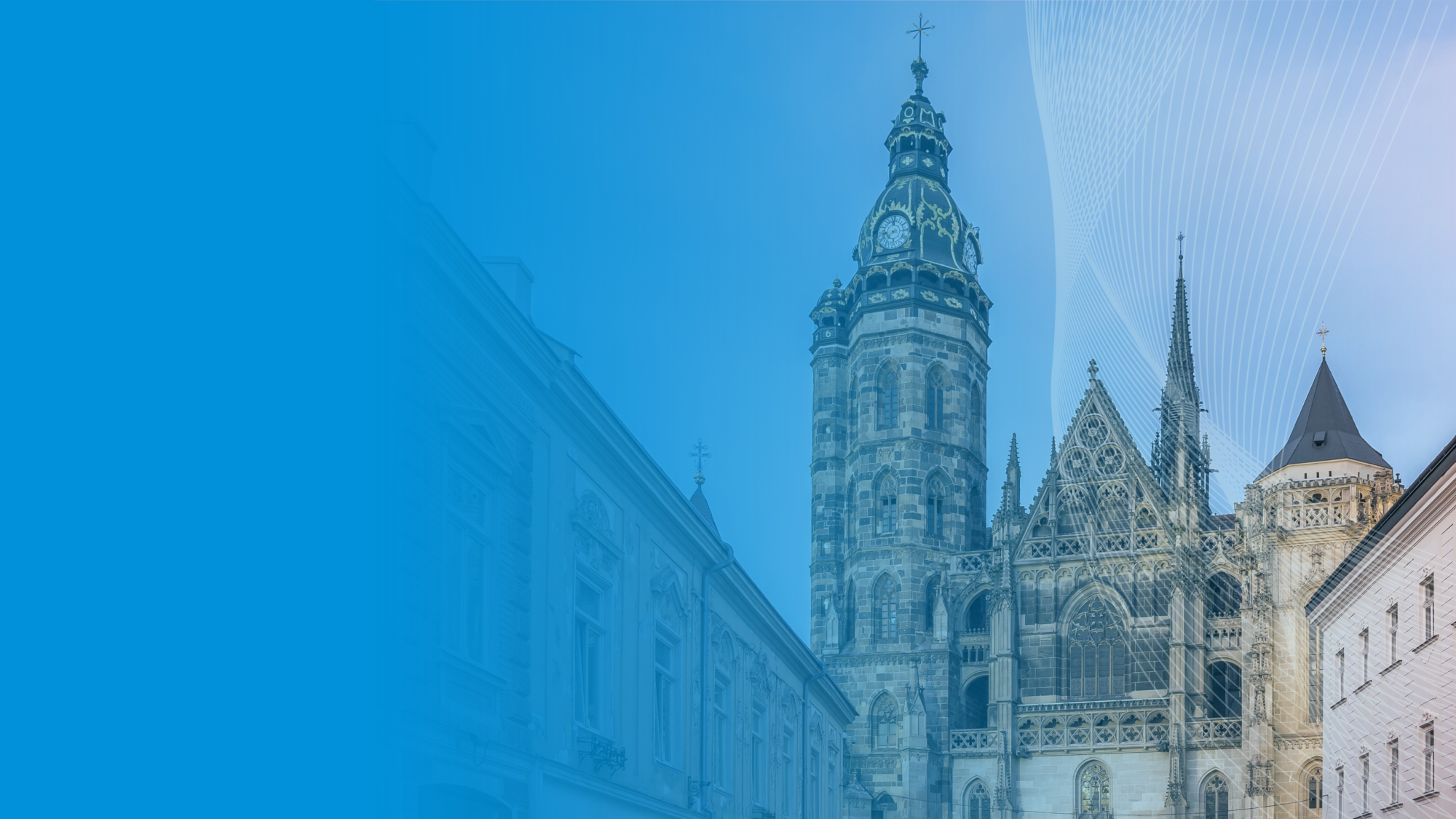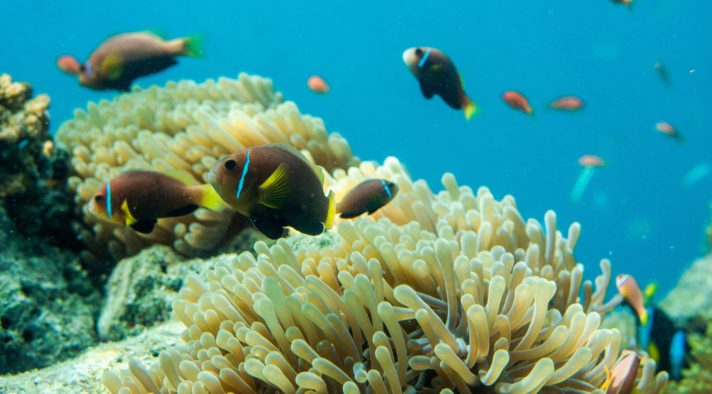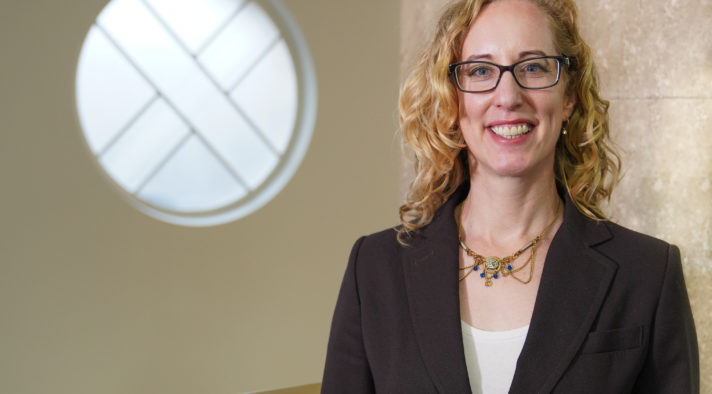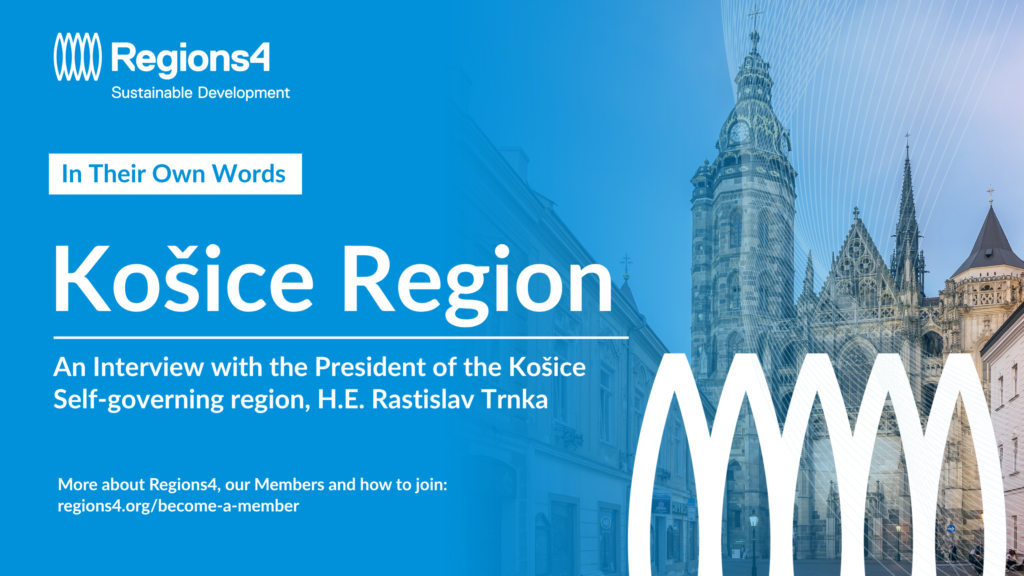
In 2025, the Košice Self-governing Region, in Slovakia, joined Regions4, marking another milestone in its long-standing dedication to innovation and sustainable development. This step strengthens Košice region’s role on the global stage in tackling environmental challenges and promoting green initiatives. In this edition of In Their Own Words, the president of the Self-governing Region, H.E. Rastislav Trnka,reflects on Košice’s journey toward sustainability and how joining Regions4 will further raise the region’s international engagement and impact.
1. What is unique about the Košice Self-governing Region?
The Košice Region is a remarkably diverse area in eastern Slovakia that combines rich cultural heritage with significant natural assets. Both locals and visitors can discover unique natural sites such as the Slovak Paradise and Slovak Karst, home to a wide variety of flora and fauna. The region also boasts numerous monuments and natural locations listed as UNESCO World Heritage Sites.
The Košice Self-governing Region places a strong emphasis on environmental protection and implements several important projects in this area. One such initiative is the “Green Catalogue,” a practical guide for systematically reducing the region’s carbon footprint and adapting to the impacts of climate change. Measures include tree planting, rainwater retention through rain gardens, and the construction of green roofs.
A key flagship project is the creation of Klimapark Kysak, which is the largest audiovisual environmental center in eastern Slovakia. The region also actively promotes cycling and sustainable mobility by developing bike routes such as EuroVelo 11 and building modern cycling shelters.
Most recently, the region has taken on one of today’s most pressing challenges – managing rainwater runoff from forest ecosystems. A large-scale biodiversity protection project has been carried out in the forests around Gelnica and Dobšiná. It is the first project of its kind in Slovakia focused on biodiversity support at this scale. It was implemented as part of the Landscape Recovery Program, which has been running in the Košice Region since 2018.
2. What are your expectations in joining Regions4?
As the President of the Košice Self-governing Region, I see our membership in Regions4 as an opportunity to strengthen our region’s position on the global stage. I believe this membership will foster the exchange of innovations, provide access to best practices in climate adaptation and environmental protection, and open the door to partnerships that will drive us forward. International networks like Regions4 help connect our projects – even seemingly small-scale solutions – with the international arena. We want to show that a region from eastern Slovakia can also be a leader in sustainable development.
3. What knowledge or experiences do you hope to share with other Regions4 members?
The Košice Self-Governing Region would like to share the results of its biodiversity protection and restoration project with its partners from Regions4. Since biodiversity loss is a global issue closely linked to climate change, sharing know-how from successful initiatives – such as this biodiversity project – is of great importance.
Another strong example is the development of the Hydrogen Valley project, in which the Region is joining forces with 22 partners from 7 European countries. Thanks to this project, the Košice Region has earned a place on the map of hydrogen technology leaders in Central and Eastern Europe. Over the next six years, we will coordinate and collaborate with key players in energy, transport, and industry from Slovakia, the Netherlands, the United Kingdom, Ukraine, Slovenia, Spain, and Germany. It is rather rare for a regional authority to take on the role of project coordinator in such large-scale initiatives, and we take this mission seriously. Our region has been working on the use of hydrogen as a green energy source since 2020.
4. Are there specific areas of Regions4 where you see immediate opportunities for collaboration?
Climate change adaptation and biodiversity restoration is currently a top priority for the Košice Region, which is why we are keen to share our experience in developing and implementing climate action plans. We are also particularly interested in the circular economy – from efficient waste management to the reuse of materials within regional economies. We see great potential in environmental education and raising climate awareness, especially among young people in secondary schools.
5. Can you share key sustainable development initiatives your region is implementing?
Green topics have long been a personal interest of mine, so I am honoured to have been appointed as a Climate Ambassador within the EU. Our largest green project at the moment is the support of biodiversity in the forests of the Gemer and Spiš regions. In selected forest areas outside of protected zones, we have carried out work and applied technological solutions across 2,500 hectares, based on the principle of loosening compacted soil using an excavator.
Before implementing these measures, up to 60% of rainwater would drain away from the forest without being retained. Thanks to this intervention, nearly 100% of the rainfall now remains in the area. This significantly increases groundwater levels in the forests, which is essential for enhancing biodiversity.
We observed positive results after the very first rainfall. The longer the “forest recovery period,” the more visible the improvements in favor of natural biodiversity.
6. How can Regions4 support the Košice region in addressing its key sustainability challenges and advancing progress toward the 2030 Agenda?
Through our membership in Regions4, we expect to gain access to proven tools, data, and methodologies that can help us translate global goals into regional action – with tangible benefits for both the environment and the people of our region.
We also see great value in building partnerships for joint projects and exchanging experiences with other regions facing similar challenges. These include landscape restoration, the promotion of sustainable mobility, and the protection of natural resources. We believe that, through Regions4, we will strengthen our ability to act systematically and in line with our climate and environmental commitments.
7. How does your region engage with local communities and stakeholders in the implementation of sustainable development policies?
We make every effort to involve organisations that operate within our region, including those established by the Košice Region – such as secondary schools, social service facilities, and cultural institutions. Within these institutions, we implement green roofs, community gardens, and organise various workshops, training sessions, and meetings with representatives of towns and municipalities.
In addition, the Region actively collaborates in its projects with experts in water management, biotechnology, climatology, and hydrogen technologies from abroad, as well as with local universities.
The Košice Self-governing Region plans to actively participate in Regions4 working groups and calls, ensuring that the voice of our region, as a new member of this platform, is heard. Our ambition is to host thematic events and study visits directly in the Košice Region, where we can showcase our concrete solutions to partners.
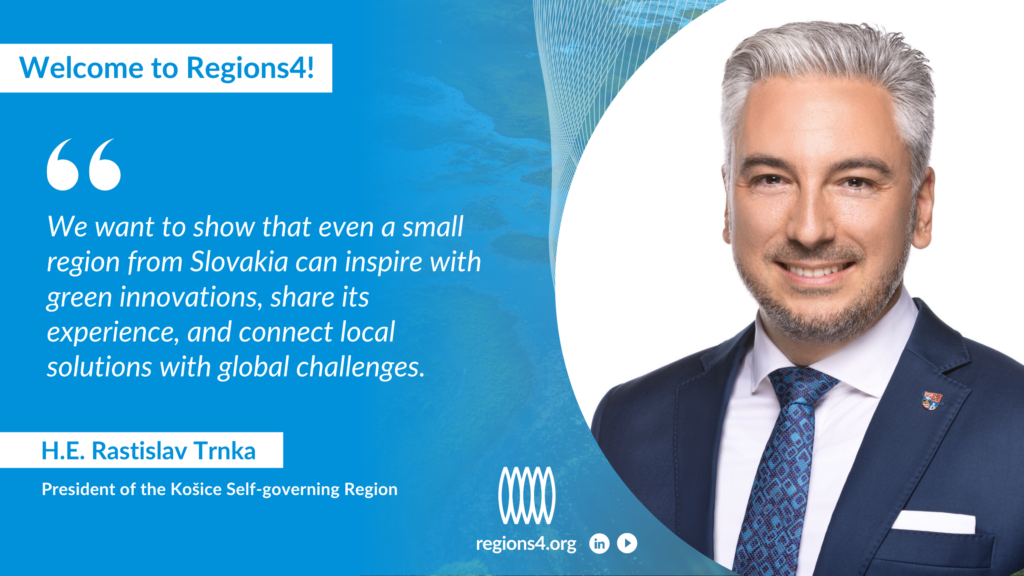
Košice Self-governing Region website: www.kosickazupa.sk
